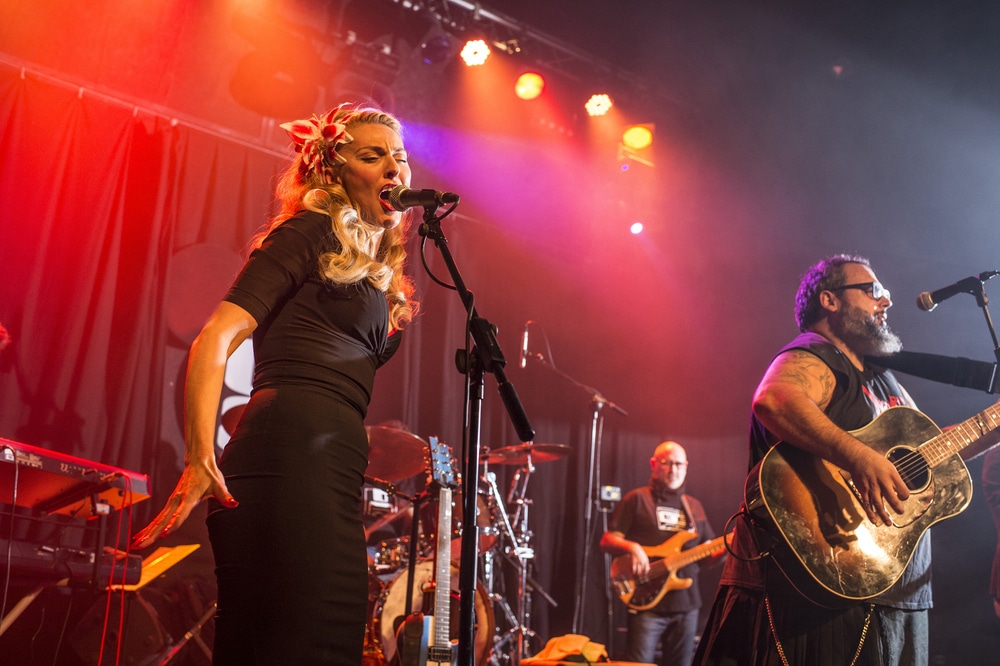Music is an art form that almost everyone loves. We can relate to the many emotions that it transmits; it can entertain us; it’s an important part of other art forms, and music can also help you improve your Spanish.
Spanish has many grammar rules, an insane amount of verb conjugations when compared to other languages, accent marks on specific syllables, and even some complex sounds: like the “rr” or “ñ”. Therefore, it can prove challenging to learn, especially for those who speak English. That’s why it’s important to complement your lessons by doing something cool, like listening to music.
To help you in your Spanish language learning journey, we’ve created this new blog series where we’ll suggest different songs in Spanish for you to learn, practice, and enjoy. We will tell you key phrases, key vocabulary, and more so that it’s very useful and relevant.
As with everything, it is better to start learning from the easiest and most basic things. So, these songs will help you understand the present tense in Spanish.
Listening to Music for Language Acquisition
Music and language have a lot of similarities. Both spark activity in the same parts of the brain. They also have tones, rhythm, and are composed of certain structures. That’s why having a musical background helps you to learn a new language, and knowing a second language provides you with abilities for music. Both activities help improve the other.
Music also helps learning a new language because it provides new vocabulary within a context; it helps with our listening and pronunciation skills and teaches us about idioms and expressions.
From childhood, adults teach us words and phrases with a certain rhythm or song. After all, a lot of us learned the alphabet by singing it. Music can help us learn even the smallest things.
8 Songs in Present Tense to Improve your Spanish
1. Corro, vuelo, me acelero – Timbiriche
Timbiriche is a very popular Mexican group from the 80s, but its songs left a mark throughout the generations. This song is about seeing your crush and the feelings you get; it’s about innocent love.
In this song, there are many verbs in the present tense, so it’s the perfect opportunity to extend your vocabulary and learn basic sentences while dancing to a fun and catchy tune. You’ll start learning different verbs from the title: corro, vuelo, me acelero (I run, I fly, I accelerate/go faster.)
From the title, you quickly learn that in Spanish you don’t need to say the personal pronouns (I, you, we, they…) because they’re understood based on the verb conjugation. For example, if you say corro (I run), people already know that you are talking about yourself – there is never confusion with this subject. This will make you sound more fluent in a conversation if you don’t say YO before the verb each time.
Here are some key phrases from the song that we think you might use frequently:
- Me da la emoción – I get excited (though it’s used without the article “la”)
- Me despierto – I wake up
- Enciendo el radio – I turn on the radio
- Me preparo para + infinitivo – I get ready for/in order to
- Vuelvo a verte – I/I’ll see you again
Vuelvo a verte is a way to say you will do something again. Other ways to say again are de nuevo, otra vez, and vuelvo a + infinitivo.
Enjoy the music video:
2. Me muero – La Quinta Estación
La Quinta Estación is a popular Spanish pop band from the 2000s. They have many hits, and they even won a Latin Grammy!
This is the perfect song to learn different verbs in the present tense, starting with the title itself: me muero (I die). In the song, it is used to present a wish: Me muero por besarte (I’m dying to kiss you). Because me muero por is also an expression people use to say that they wish for something to happen.
Other verbs in the present tense that you’ll hear in the lyrics are: pido, eres, soy (I ask, are, am). All in small phrases that will help you understand when to use them.
Key phrases:
- Cuando más me haces falta – When I need you the most
- ¡Ay, cómo me haces falta! – Oh, how I need you
- El mundo se equivoca – The world is wrong (useful phrase alert: Me equivoqué. = I was wrong/I’m wrong.)
Enjoy the music video:
Selena was an American singer who became very popular with Americans and Mexicans. If you like tex-mex and cumbia, you’ll love her music. She has many popular songs, and “Amor Prohibido” is one of them. It talks about a relationship that everyone disagrees with. It also expresses her desire to see her lover.
You’ll hear a lot of examples of the present tense, including the chorus. It also has some present in its subjunctive form, such as Espero ese momento en que escuche tu voz (I wait for that moment when I hear your voice) and Y cuando al fin estemos juntos los dos (And when we are finally together.)
Key phrases:
- Yo espero ese momento – I wait for that moment
- Cuando al fin estemos juntos – When we’re finally together
- Qué importa qué dirán – Who cares what they say (though Spanish speakers usually add “el” to the phrase: qué importa EL qué dirán)
Enjoy the music video:
4. Vivo por ella – Andrea Bocelli y Martha Sánchez
Andrea Bocelli is an Italian singer; Martha Sánchez is a Spanish singer. They joined forces to bring to life this Spanish version of the Italian song “Vivo per lei”, also sung by Bocelli. The song is an ode to music. It was rewritten from its original, a romantic song that belonged to O.R.O., an Italian band.
Bocelli has sung “Vivo por ella” with many other artists, who sang their parts in their native languages. So, if you are also interested in other languages, you can look for this same song in Italian, French, English, and Portuguese.
Key phrases:
- No recuerdo cómo fue – I don’t remember what happened
- Está junto a mí – (She/He) is next to me
- Se llama – (Her/His) name is
Enjoy the music video:
This is the perfect example of the presente gnómico, which is used to say general truths that aren’t part of a specific moment in time. This passionate song shows the differences between amar (to love) and querer (to love/like). Both things are about love, but amar is more intense than querer. For example, you could say te amo (I love you) to your mom, but say te quiero to a friend. It can be a subjective topic because it depends on your emotions. In this song, José José presents us with a series of definitions or affirmations about love.
On top of learning Spanish, you’ll also listen to José José, known as El príncipe de la canción (The prince of song), an important Mexican singer that left a mark on the music industry.
Key Phrases:
- Pocos sabemos amar – Only a few of us know how to love
- El amor no conoce el final – Love knows no end
- Nunca llorar – Never to cry
- No puede pensar – He/She can’t think
Enjoy the music video:
Juanes is a Colombian singer, and this song about heartbreak was very popular internationally. He was at the top of the music lists in many European countries!
Though it combines past and present verses, most of it is in the present tense. Its catchy rhythm will help you memorize some important verbs, like tengo (I have) and te digo (I/I’ll/I’m tell(ing) you); and some words and phrases about a broken heart.
Key phrases:
- Tengo la camisa negra – I have a black shirt
- Está de luto – (He/She) is grieving
- Aquel día te encontré – I found/met you/ran into you that day
- Perdí la calma – I lost my calm/I lost it
Enjoy the music video:
Raphael is a renowned Spanish singer; he’s important if you want to immerse yourself in Spanish music. In this song, the repetition of “yo soy” will help you remember a popular phrase that can be used to introduce yourself: I am. In this song, Raphael introduces himself as a lover.
It will also help you with the difference between the verb ‘to be’ (I am, you are, he is, we are, etc) in Spanish, as it is split into two verbs in Spanish (this idea doesn’t really exist like this in English): ser y estar. For example: yo soy aquel que por tenerte da la vida (I am the one that gives up his life to have you); and Estoy aquí, aquí, para adorarte (I am here, here, to adore you).
Key phrases:
- Yo soy aquel – I’m that one (meaning, that person)
- Estoy aquí – I’m here (I am physically here for you)
- El que te espera – The one that waits/is waiting for you
Enjoy the music video:
Chayanne is a famous Puerto Rican singer and dancer. He has had many hits throughout his career. This is an energetic song that will help you with the imperative form (like a command: do it, drink, eat, etc), which must always be conjugated in the present tense. You can even find the imperative form in the title: “Provócame” (Get to me/make me react). It’s like a beg or a subtle challenge to the woman he sings about. After all, it’s a flirtatious song. You’ll also hear other commands, along with other sentences in the present tense.
Key phrases:
- Te encontré – I found you
- Tus ojos se clavaron en mí – Your eyes fixed on me (clavar = to nail something, so imagine nailing your eyes into someone)
- No comprendo – I don’t understand
- Ten valor – Be brave/Have courage
- Acércate – Come close. Get over here
Enjoy the music video:
The Importance of Music in Spanish
The Spanish language has had many contributions to music around the world and throughout history. Many of the artists that sing in Spanish have been given many awards and have had an impact on different generations and countries. The rhythms, lyrics, and genres are diverse, meaningful, and can help you with your Spanish learning process.
Let’s add this to the fact that music is an excellent tool to improve your language acquisition. So, if you’re looking to improve in Spanish language and culture, listening to some music in Spanish will benefit you.
Now, all you have to do is listen to our suggested songs and repeat your favorite ones throughout the day. You can complement this with some of our private Spanish lessons, where you’ll discover a fun teaching method that will give you the skills you need to become fluent. Take a trial class for only $35. Check it out today.





